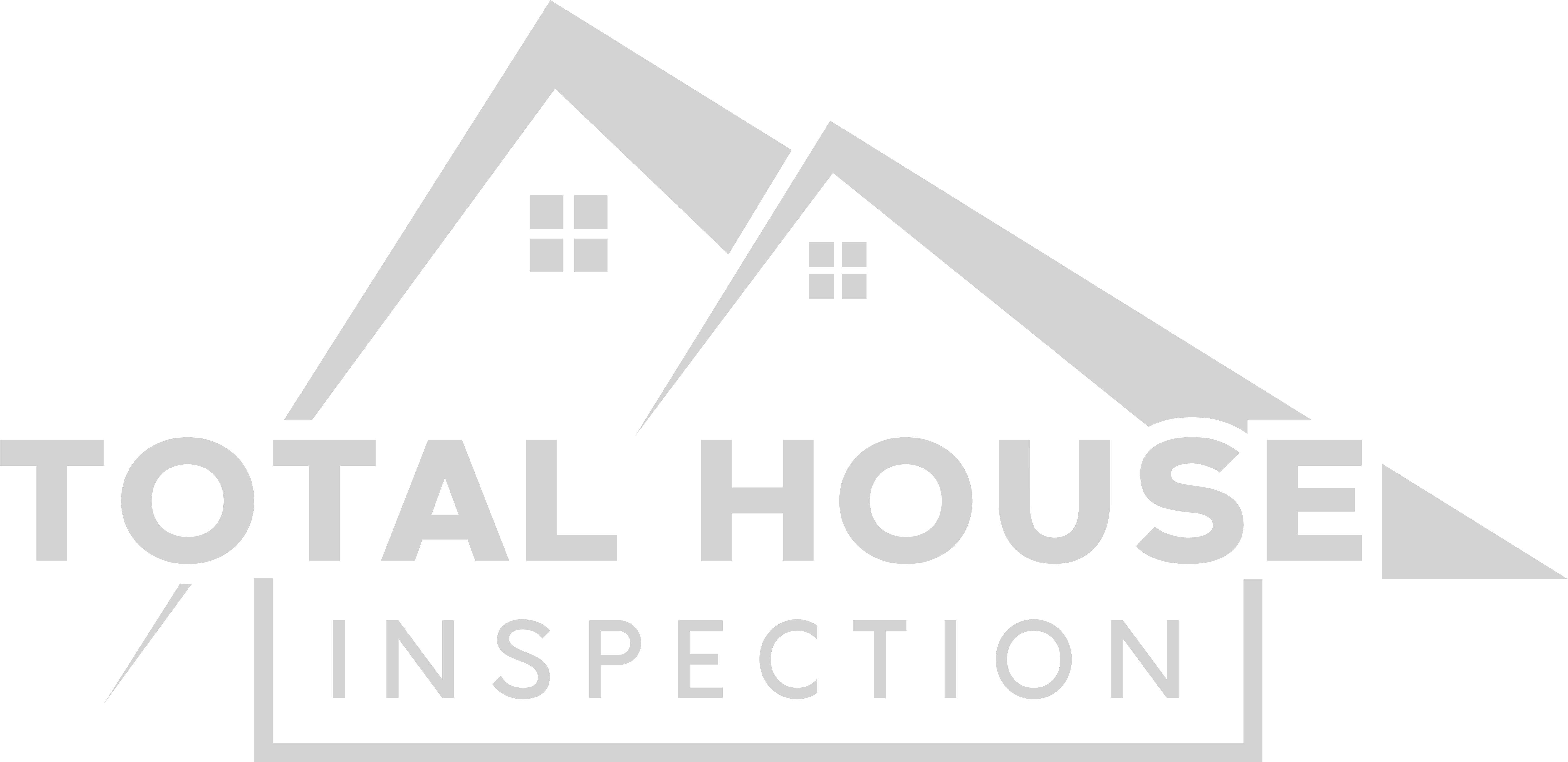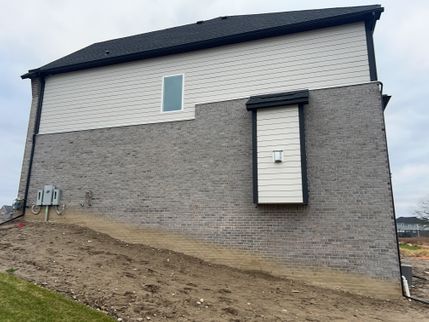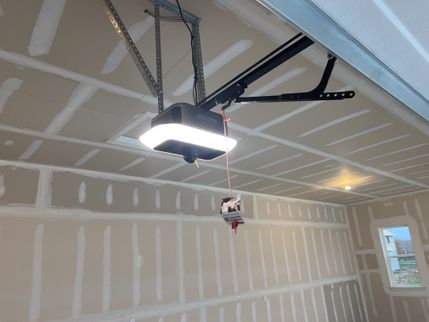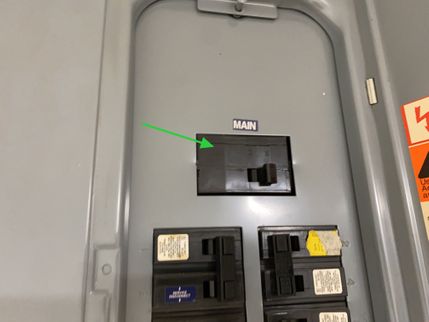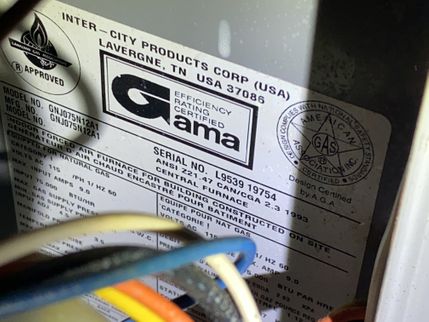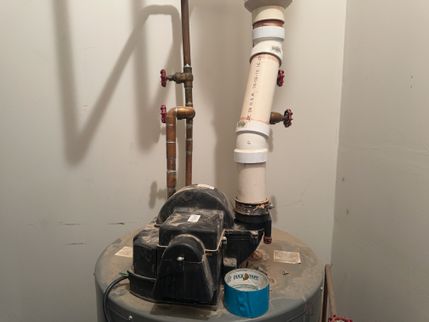The Scope and Purpose of a Home Inspection
Purchasing property involves risk
The purpose of a home inspection is to help reduce the risk associated with the purchase of a structure by providing a professional opinion about the overall condition of the structure. A home inspection is a limited visual inspection and it cannot eliminate this risk. Some homes present more risks than others. We cannot control this, but we try to help educate you about what we don’t know during the inspection process. This is more difficult to convey in a report and one of many reasons why we recommend that you attend the inspection.
A home inspection is not an insurance policy, warranty or guarantee
This report does not substitute for or serve as a warranty or guarantee of any kind. Home warranties can be purchased separately from insuring firms that provide this service.
A home inspection is visual and not destructive
The descriptions and observations in this report are based on a visual inspection of the structure. We inspect the aspects of the structure that can be viewed without dismantling, damaging or disfiguring the structure and without moving furniture and interior furnishings. Areas that are concealed, hidden or inaccessible to view are not covered by this inspection. Some systems cannot be tested during this inspection as testing risks damaging the building. For example, overflow drains on bathtubs are generally not tested because if they were found to be leaking they could damage the finishes below. Our procedures involve non-invasive investigation and non-destructive testing which will limit the scope of the inspection.
This is not an inspection for code compliance
This inspection and report are not intended for city / local code compliance. During the construction process structures are inspected for code compliance by municipal inspectors. Framing is open at this time and conditions can be fully viewed. Framing is not open during inspections of finished homes, and this limits the inspection. All houses fall out of code compliance shortly after they are built, as the codes continually change. National codes are augmented at least every three years for all of the varying disciplines. Municipalities can choose to adopt and phase in sections of the codes on their own timetables. There are generally no requirements to bring older homes into compliance unless substantial renovation is being done.
This is just our opinion
Construction techniques and standards vary. There is no one way to build a house or install a system in a house. The observations in this report are the opinions of the home inspector. Other inspectors and contractors are likely to have some differing opinions. You are welcome to seek opinions from other professionals.
The scope of this inspection
This inspection will include the following systems: exterior, roof, structure, drainage, foundation, attic, interior, plumbing, electrical and heating. The evaluation will be based on limited observations that are primarily visual and non-invasive. A home inspection will not reveal every concern that exists or ever could exist, but only those material defects observed on the day of the inspection. A material defect is a condition with a residential real property or any portion of it that would have a significant adverse impact on the value of the real property or that involves an unreasonable risk to people on the property. The fact that a structural element, system or subsystem is near, at or beyond the end of the normal useful life of such a structural element, system or subsystem is not by itself a material defect.
This inspection and report are not intended to be technically exhaustive. For a review of the Standard of Practices for Inspection a residential property visit: Click here
Your expectations
The overall goal of a home inspection is to help ensure that your expectations are appropriate with the house you are proposing to buy. To this end we assist with discovery by showing and documenting observations during the home inspection. This should not be mistaken for a technically exhaustive inspection designed to uncover every defect with a building. Such inspections are available but they are generally cost-prohibitive to most homebuyers.
As a homeowner, you should expect problems to occur. Roof will leak, basement may have water problems, and systems may fail without warning. For these reasons, you should keep a comprehensive insurance policy current.
Your participation is requested
Your presence is requested during this inspection. A written report will not substitute for all the possible information that can be conveyed verbally by a shared visual observation of the conditions of the property.
Thank you for your business
We are proud of our services, and trust that you will be happy with the quality of our report. We have made every effort to provide you with accurate assessment of the condition of the property, and its components, and to alert you to any significant defects or adverse conditions. However, we may not have tested every outlet, and not open every door and window, or identified every problem. Also, because our inspection is essentially visual, latent defects could exist. We cannot see behind walls. Therefore, you should not regard our inspection as a guarantee or warranty. It is simply a report on the general condition of the property at a given point in time. As a homeowner, you should expect problems to occur. Roof will leak, basement may have water problems, and systems may fail without warning. For these reasons, you should keep a comprehensive insurance policy current.
This report was written exclusively for our Client. It is not transferable to other people. The report is only supplemental to Seller's Disclosure Statement.
Thank you for taking the time to read the report, and call us if you have any questions. We are always attempting to improve the quality of our service, and our report. Thank you for choosing our home inspection service.
We are grateful for your business, and look forward working with you again, or with your friends in the future!
How to Read This Report
Getting the Information to You
This report is designed to deliver important and technical information in a way that is easy for anyone to access and understand. If you are in a hurry, you can take a quick look at our "Summary Page” and quickly get critical information for important decision making. However, we strongly recommend that you take the time to read the full Report, which includes digital photographs, captions, diagrams, descriptions, videos and hot links to additional information.
The best way to get the layers of information that are presented in this report is to read your report online (the HTML version), which will allow you to expand your learning about your house. You will notice some words or series of words highlighted in blue and underlined – clicking on these will provide you with a link to additional information. The HTML version of this report also contains streaming videos. Short video clips often contain important information and critical context and sounds that can be difficult to capture in words and still pictures.
For the most reliable viewing experience, I recommend viewing the report on as large a screen as practical, as much detail can be lost on small devices like smart phones. For similar reasons, reports should only be printed in color to retain as much detail as possible and minimize misinterpretation of photographs.
This report can also be printed on paper or to a PDF document.
We recommend to save a PDF for future references.
Chapters and Sections
This report is divided into chapters that parcel the home into logical inspection components. Each chapter is broken into sections that relate to a specific system or component of the home. You can navigate between chapters with the click of a button on the left side margin.
Most sections will contain some descriptive information done in black font. Observation narrative, done in colored boxes, will be included if a system or component is found to be significantly deficient in some way or if we wish to provide helpful additional information about the system or the scope of our inspection. If a system or component of the home was deemed to be in satisfactory or serviceable condition, there may be no narrative observation comments in that section and it may simply say “tested,” or “inspected.”
Observation Labels
All narrative observations are colored, numbered and labeled to help you find, refer to, and understand the severity of the observation. Observation colors and labels used in this report are:
- Disclaimers:Disclaimers for various systems
- Major Concern:Repair items that may cost significant money to correct now or in the near future, or items that require immediate attention to prevent additional damage or eliminate safety hazards.
- Repair:Repair and maintenance items noted during inspection. Please note that some repair items can be expensive to correct such as re-finishing hardwood floors, but are considered simply repair items due to their cosmetic nature.
- Recommended Maintenance:These are repair items that should be considered "routine home ownership items," such as servicing the furnace, cleaning the gutters or changing the air filters in the furnace.
- Improve:Observations that are not necessarily defects, but which could be improved for safety, efficiency, or reliability reasons.
- Monitor:Items that should be watched to see if correction may be needed in the future.
- Future Project:A repair that may be deferred for some time but should be on the radar for repair or replacement in the near future.
- Efficiency:Denotes observations that are needed to make the home more energy efficient as well as to bring the home up to modern insulation standards. This category typically includes windows and insulation. Other items, such as lighting and appliances, are not inspected for their energy status.
- Functional:Items that are in operational condition
- Note:Refers to aside information and /or any comments elaborating on descriptions of systems in the home or limitations to the home inspection.
Summary Page
The Summary Page is designed as a bulleted overview of all the observations noted during inspection. This helpful overview is not a substitution for reading the entire inspection report. The entire report must be read to get a complete understanding of this inspection report as the Summary Page does not include photographs or photo captions.
Summary
Major Concerns
- A-1 Attic:
Bathroom exhaust vent(s) terminated in the attic instead of at the home exterior. Having exhaust fans venting into the attic can cause lead to seasonal condensation and moisture controls problems and could damage the attic building materials. Repair to ensure proper discharge of air to the exterior and be sure exhaust ductwork is insulated to R-8 or better to reduce risks of seasonal condensation.
Repairs
- G-1 Garage:
All outlets should be GFCI protected outlets. Recommend adding GFCI outlets. Consult a licensed electrician about the needed repairs
Future Projects
- H-1 Heat/AC:
The average life expectancy of a gas fired furnace is 20 to 25 years. Furnace was operating normal, but should be considered as having exceed a normal life expectancy, and recommend budgeting for a replacement. Consider evaluation and service by a qualified HVAC technician to more accurately determine the unit's condition and ensure that it is in the best possible working condition.
The Full Report
General Comments
Attendance
Residence Type
Occupancy / Utilities
House Views
Build On
Garage Type
Bedrooms / Bathrooms
Weather Conditions
Items not Inspected
Inspection Information
Inspection Information
Information: Information
All comments and observations made by the inspector should be considered and actions taken prior to the end of the inspection period. This includes any recommendation to employ a professional to further evaluate any anomalous findings noted during this inspection. All recommendations for repair, replacement, remediation of limitations and any follow-up re-inspection should be considered and actions taken prior to the end of inspection contingency.
Your best interests are your inspector's primary concern however, the inspector is not an expert, licensed plumber/electrician/HVAC/Structural engineer.
All costs associated with further inspection fees, and the repair or replacement of any component should be considered prior to the end of inspection contingency.
General Comments
Attendance
 Client 1
Client 1 Buyer Agent
Buyer Agent
Residence Type
 Single Family
Single Family
Occupancy / Utilities
Occupancy: Vacant
Vacant
Utilities: Utilities were ON
Utilities were ON
Some houses present risks well beyond what we are likely to discover during a visual inspection. Vacant and abandoned houses are just such houses as the piping and wiring systems and appliances, in particular, have not been tested under real-life conditions for a long time. While some of these systems were working at the time of inspection, it is difficult to know how they will respond to regular use after the inspection and they could be unreliable For example, septic systems may initially function and then fail under a live load. Plumbing traps may operate with no signs of leaks and then let go when being actively used for a few days. Seals dry up and leak. Sewer lines with roots may allow water flow, but then fail when waste and tissue are flushed. It takes a few days for that to backup.
House Views
House Views: 📸
Exterior House Views
For the purpose of the inspection, house is facing: North
North
Back: South
South
Right Side: West
West
Left Side: East
East
Build On
 Finished Basement
Finished Basement
Garage Type
 Attached
Attached 2 car garage
2 car garage
Bedrooms / Bathrooms
Bedrooms: 3
Bathrooms - Full: 1
1/2 Bathrooms: 1
Weather Conditions
Weather During the Inspection: Dry
Approximate Temperature During the Inspection: Over 70[F]
Ground & Soil Conditions: Dry
Items not Inspected
Appliances: Washer & Dryer
Washer & Dryer
Garage
Garage General
Type: Attached
Attached
# of Cars: 2 car garage
2 car garage
View: Limited View
Limited View
At the time of the inspection, the occupant’s belongings significantly limited the Inspector’s view of the garage floor, walls & or ceilings.
Rafters/Ceiling
Condition: Drywall, Satisfactory
Garage ceiling was in generally serviceable condition at the time of the inspection. Notable exceptions will be listed in this report.
Walls
Wall Types: Drywall
Limitations: Moderate
Areas of the walls were not visible due to seller's personal belongings. Moderate storage. Limited Inspection
Floors
Floor Type: Bare concrete
Bare concrete
Condition: Satisfactory, Limited view
Garage floor was in generally serviceable condition at the time of the inspection. Notable exceptions will be listed in this report.
Some areas of the garage floor was not visible. Personal items blocking the view. Limited inspection
Garage Electrical
Condition: Functional
GFCI: Non-GFCI
The electrical was in serviceable condition at the time of the inspection. Notable exceptions will be listed in this report.
Other Doors
Exterior Door Condition: Functional
Fire Door/Steps Condition: Functional
The exterior side door was in generally serviceable condition at the time of the inspection. Notable exceptions will be listed in this report.
The garage/interior door was in generally serviceable condition at the time of the inspection. Notable exceptions will be listed in this report.
Garage Door(s)
Most components of the garage doors appeared to be in serviceable condition at the time of the inspection. Any exceptions will be listed in this report.
Garage Opener
Number of Openers: 1
1
Type: Screw Drive
General Condition: Functional
Disclaimer: Info
Info
Garage doors were not tested by the Inspector using specialized equipment and this inspection will not confirm compliance with manufacturer’s specifications. Pressure sensors/systems are generally not tested due to the risk of damage if they are not properly operating - we recommend having a general service completed prior to regular use.
Photo Sensor(s): Functional
The automatic garage door(s) opener(s) responded to the controls at the time of the inspection. Appeared to be in serviceable condition at the time of the inspection
The photoelectric sensor designed to activate the automatic-reverse at the overhead garage door responded to testing in a satisfactory manner. Pressure sensors/systems are generally not tested due to the risk of damage if they are not properly operating - we recommend having a general service completed prior to
regular use.
Electric Service
Service Equipment
Main Panel Box Amperage: 100 amps
Electric Service Amperage: 100 amps
Main Electric Panel Location: Basement
Basement
Main Panel & Main Breaker View: 📷
Main Panel & Main Breaker View
Panel Manufacturer: Square D
Square D
General Condition: Functional
Functional
The electrical panel was satisfactory. Notable exceptions will be listed in this report if any.
Grounding System
Present
During the inspection, every effort is made to inspect the visible components of the electrical system grounding. The grounding system is critical for safely discharging electrical surges, especially in the case of lightning strikes. There is no way in the context of a inspection to verify the "effectiveness" of the grounding system as much of the system is not visible, and there are no practical tests one can perform in the way we can test a furnace or a plumbing fixture.
Bonding System
 Present - Could Not Confirm
Present - Could Not Confirm
During the inspection, I attempt to visually document electrical system bonding. There is no way in the context of a home inspection to verify the "effectiveness" of system bonding. All metallic systems in the building are required to be "bonded" (connected) to the the building's electrical grounding system. Bonding creates a pathway to shunt static charges (that would otherwise build up on the system) to earth, and to provide a pathway to trip a breaker in the event that these bonded metallic components became energized.
Heat/AC
Furnace
Furnace Location: Basement
Manufacturer: Inter-City
Furnace Type: Gas fired forced hot air
The Inspector specifically disclaims furnace heat exchangers because a proper evaluation requires invasive, technically exhaustive measures which exceed the scope of the General Home Inspection. If there is any doubt about the condition of the heat exchanger, you should have the furnace certified by a qualified HVAC contractor.
The inspector will usually test the heating and air conditioner using the thermostat or other controls. For a more thorough investigation of the system please contact a licensed HVAC service person.
Year Build: 2004
Furnace Condition: Functional
The average life expectancy of a gas fired furnace is 20 to 25 years. Furnace was operating normal, but should be considered as having exceed a normal life expectancy, and recommend budgeting for a replacement. Consider evaluation and service by a qualified HVAC technician to more accurately determine the unit's condition and ensure that it is in the best possible working condition.
The heating system was inspected by using normal operating controls. The furnace(s) responded adequately to the call for heat. Notable exceptions will be listed in this report.
Filters
Filter Type: Disposable
Disposable
Filter Location: Side compartment
Side compartment
Filter Size: 14x20x1
Condition: Dirty
The air filter for this furnace was dirty and should be changed.
Enclosure
Condition: Functional
The furnace enclosure was in generally serviceable condition at the time of the inspection. Notable exceptions will be listed in this report. Recommend having the furnace cleaned and check by a professional contractor every year.
Condensate Drain
Observations: Discharge Ok
The furnace exhaust produces condensate fluid which must be discharged to a proper location. Conditions appeared to be acceptable at the time of the inspection.
AC Compressor
AC Compressor Location: Exterior east
Manufacturer: Lennox
Year Build: 2024
Condition: Functional
Refrigerant Lines: Functional
The cooling system was inspected by using normal operating controls. The AC unit(s) responded adequately to the call for cool air.
This inspection does not determine if the evaporator coil BTU size is the same as condensing unit size - consult a HVAC contractor for further evaluation as needed
The refrigerant insulation was in satisfactory condition at the time of the inspection
Air Supply
Condition: Ok / Mostly, Limited view
The air supply ductwork was in generally serviceable condition at the time of the inspection. Notable exceptions will be listed in this report.
Some of the ductwork was not visible due to finished ceilings/walls.
Venting
Type of Venting: Metal Pipe
Metal Pipe
Vent Condition: Venting Ok
The combustion exhaust flue for this furnace appeared to be properly configured and in serviceable condition at the time of the inspection.
Water Heater
Water Heater
Location: Basement
Type: Gas water heater
Manufacturer: Richmond
Year Build: 2024
Capacity: 40 gallons
Water heater was operating properly at the time of the inspection. The water heater is visually inspected only. Consult manufacturers owner's manual
for general maintenance recommendations to extend the life of the unit.
Notable exceptions will be listed in this report.
TPR Valve and Discharge Pipe
TPR : Present
Present
The water heater was equipped with a properly-configured pressure relief valve discharge pipe which was connected to the pressure relief valve. The inspector visually inspects the TPRV only - this valve is not opened or tested during the inspection
Pipes Condition
Condition: Ok
Pipe(s) and fittings were in good condition at the time of the inspection
Gas Valve
General Picture of Valve: 📷
Gas Valve View
Venting
Venting Condition: Venting OK
The exhaust flue for this gas-fired water heater appeared to be properly configured and in serviceable condition at the time of the inspection.
Attic
Ventilation
Vent Types: Soffit
Soffit Ridge
Ridge
Condition: Functional, Additional Ventilation Recommended
The attic ventilation was in generally serviceable condition at the time of the inspection. Notable exceptions will be listed in this report if any.
Additional ventilation of the attic is recommended. Consult with a roofing contractor.
Electrical
Condition: Functional, Limited Visibility
The attic electrical appeared to be in generally serviceable condition at the time of the inspection. Notable exceptions will be listed in this report if any. Some areas had limited visibility.
Some of the electrical was not visible due to insulation and/or access. Limited inspection
Attic Plumbing
Type: Cast Iron
Cast Iron
Condition: Functional
The attic plumbing appeared to be in generally serviceable condition at the time of the inspection. Some areas were not visible due to access or insulation over. Notable exceptions will be listed in this report if any.
Insulation
Insulation Type: Fiberglass batts with kraft paper facing
Insulation Depth: Averages about 6-8 inches
Observations: Satisfactory, Improve to Modern Standard
The attic insulation appeared to be in generally serviceable condition at the time of the inspection. Notable exceptions will be listed in this report if any.
The attic insulation could be improved to modern standards, which recommend R-49. R-value is the measure of resistance to heat loss; the higher the R-value, the better the insulation. During insulation repairs, it is best practice to implement any air seal-up repairs to seal air leakage. Also, be sure you have completed any wiring or other projects needed in the attic. Then, hire an insulation contractor to improve thermal barriers.
Fan Exhaust Vents
Condition: Bathroom Exhaust In the Attic
Bathroom Exhaust In the Attic
Bathroom exhaust vent(s) terminated in the attic instead of at the home exterior. Having exhaust fans venting into the attic can cause lead to seasonal condensation and moisture controls problems and could damage the attic building materials. Repair to ensure proper discharge of air to the exterior and be sure exhaust ductwork is insulated to R-8 or better to reduce risks of seasonal condensation.
Pests
Condition: Satisfactory
Appeared to be in good condition at the time of the inspection. This is not a pest inspection. It is only an observation if any visible signs of pests are present at the time of the inspection. Pests will enter the house/attic at any time. Seal any paths for entry in the attic/house.
Plumbing / Gas General
Main Gas Valve
Main Gas Valve Location: Below the Meter
Main Gas Valve Condition: Ok
Ok
The gas shut-off appeared to be in serviceable condition at the time of the inspection. Shut-offs were not operated, but were visually inspected.
Main Water Valve
Picture of Water Meter: 📷
Water Meter
Main Water Valve Location: Basement
Type: Copper
Copper
Although the main water supply shut-off valve was not operated at the time of the inspection it was visually inspected and appeared to be in serviceable condition.
Plumbing
Plumbing Type: Copper
Copper PVC
PVC
Drain pipes appeared in functional and in satisfactory condition, at time of inspection. Notable exceptions will be listed in this report.
Inspection of all areas of the drain pipes and water supply lines was not possible due to limited access/finished walls and ceilings to check for defects such as, but not limited to: leaks, corrosion, improper workmanship, and damage.
Water supply lines appeared in functional and in satisfactory condition, at time of inspection. Notable exceptions will be listed in this report.
